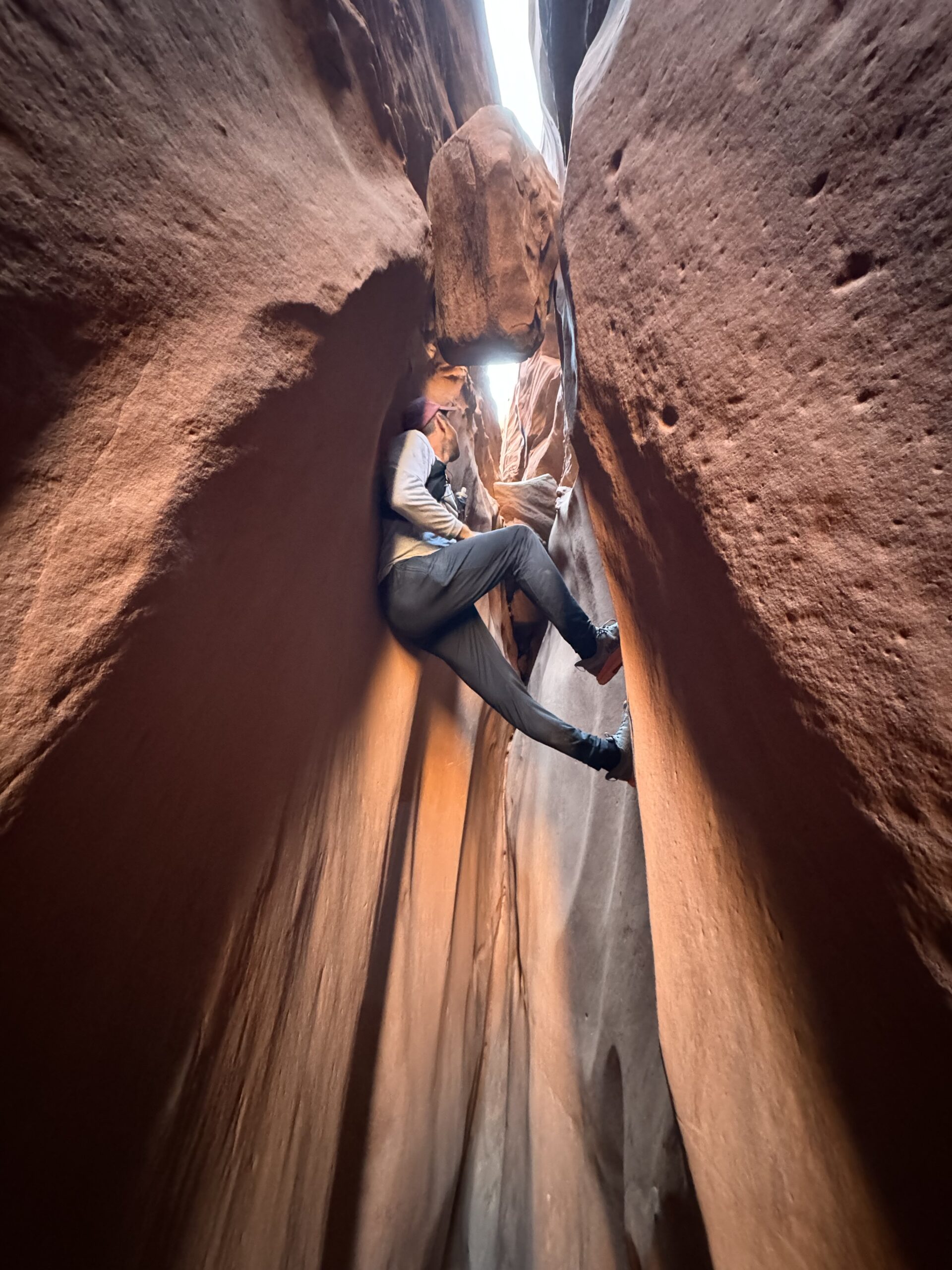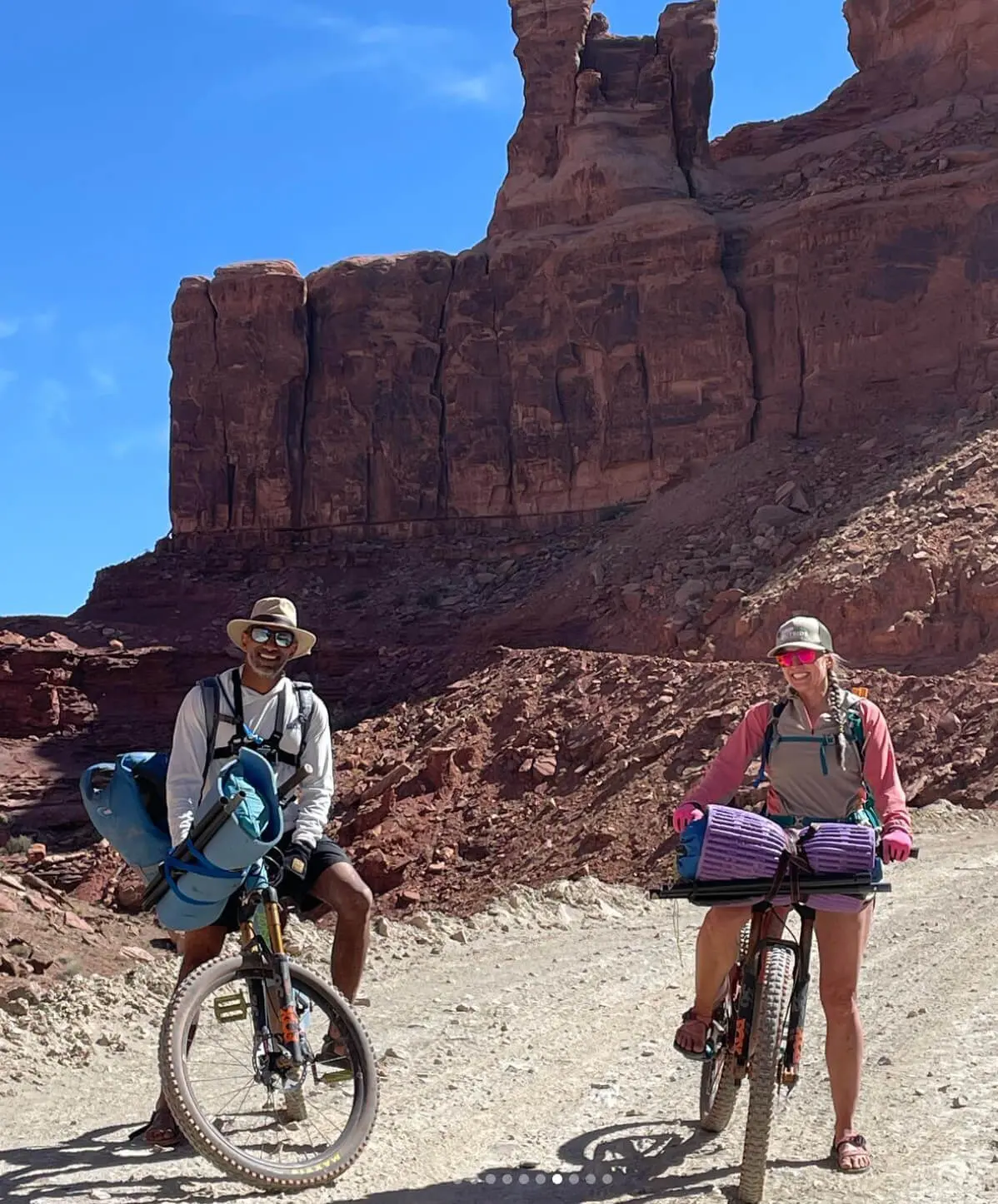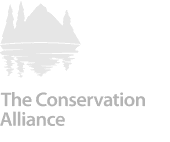Our latest road trip took us deep into the Hanksville, Utah area — an under-the-radar gem for outdoor adventures that was full of surprises. Over a few days we wandered through the slot canyons near the Irish Canyons south of Hanksville, camped outside Goblin Valley State Park, hiked into the towering walls of Franworth Canyon, and made the trek into Horseshoe Canyon – the remote appendage of Canyonlands National Park – to see the ancient Great Gallery rock art. From surreal hoodoo landscapes to hidden slot canyons and cultural history, there’s no shortage of unforgettable things to do in Hanksville, Utah.
Irish Canyons – Camping & Canyoneering
On our first day camping near the Irish Canyons about 30 minutes south of Hanksville, we headed out on an impromptu adventure in the nearby canyons. These canyons, accessible yet challenging, provide a playground for both novice and seasoned hikers. We decided to explore all of these canyons over 24 hours with our buddy Drew who was on his final stretch of a 4-month-long RV road trip from NY. We’re so glad that we squeezed this slot canyon adventure in.
Quick TL:DR on the Irish Canyons
Our stoke level after hiking the Irish Canyons in Utah was a 10/10. We loved playing around in the canyons and wanted to explore deeper and further but we were limited by the lack of gear (and skill). We’ve already planned a guided Canyoneering trip to the North Wash this May – a full-day guided canyoneering trip from Moab to explore and rappel down into these canyons with the professionals (and the right gear)!
Leprechaun Canyon
Our first day began with a dog walk/hike in Leprechaun Canyon, a 0.9-mile hike ascending 121 feet from the trailhead. This slot canyon features a variety of experiences, including a tight keyhole subway section known as Belfast Boulevard. As the narrowest canyon we explored, Leprechaun Canyon is not for the claustrophobic. Although no technical gear is required to hike up from the bottom, the canyon eventually gets to a very tight squeeze at which point we turned around and head back for happy hour.
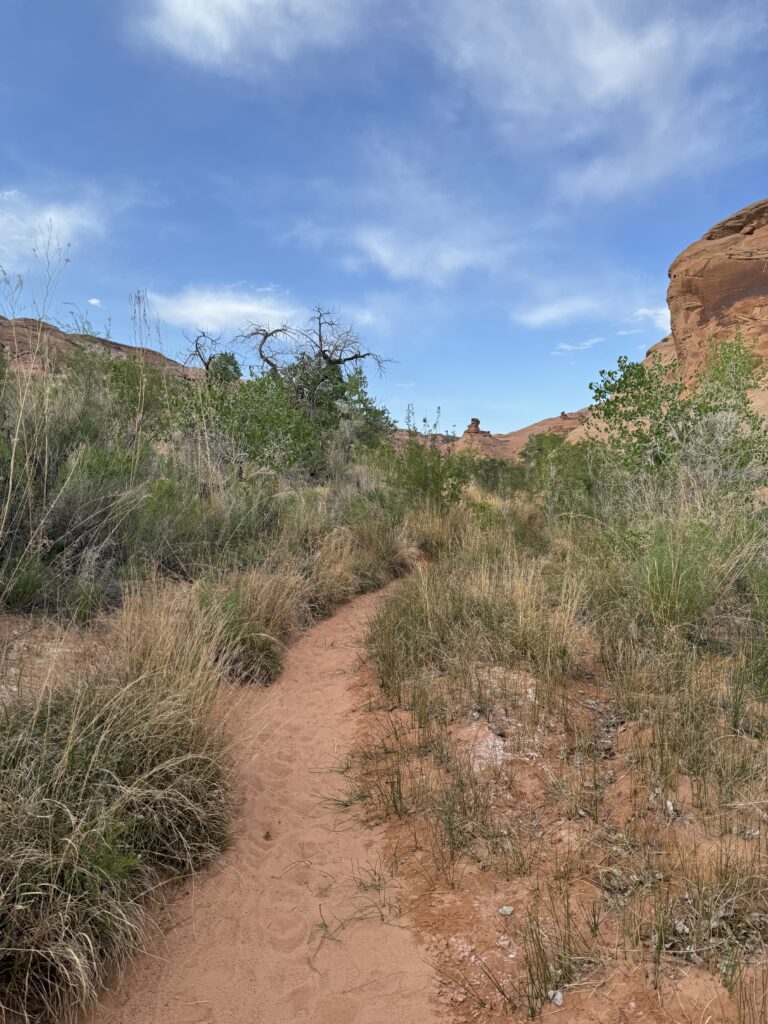
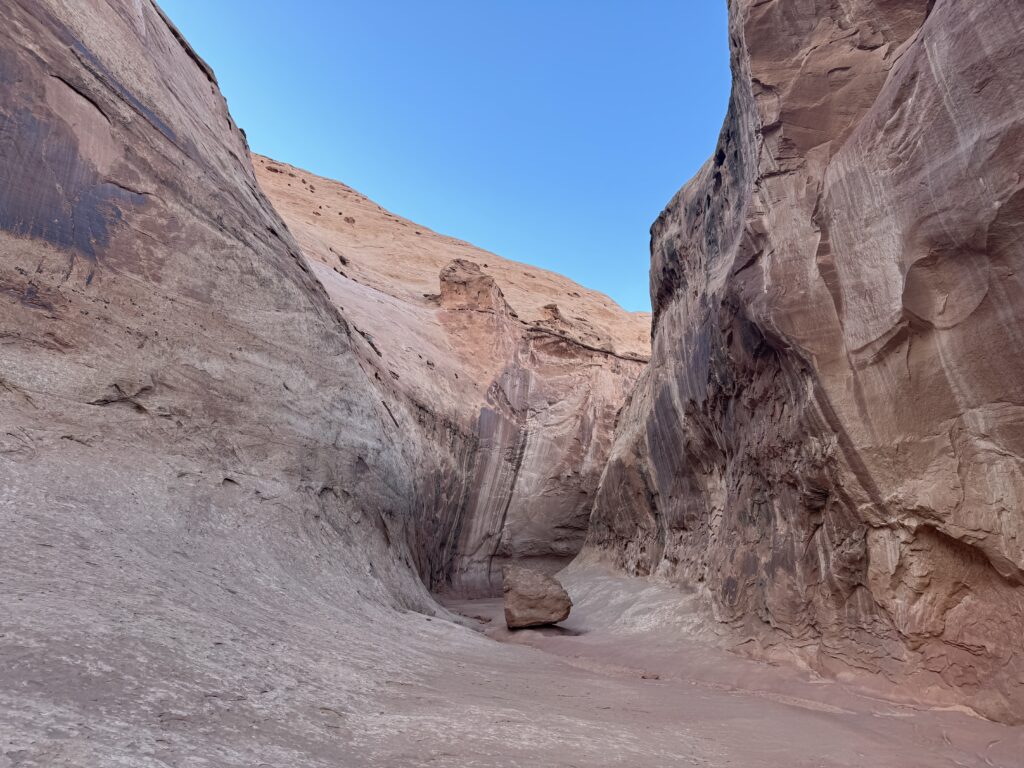
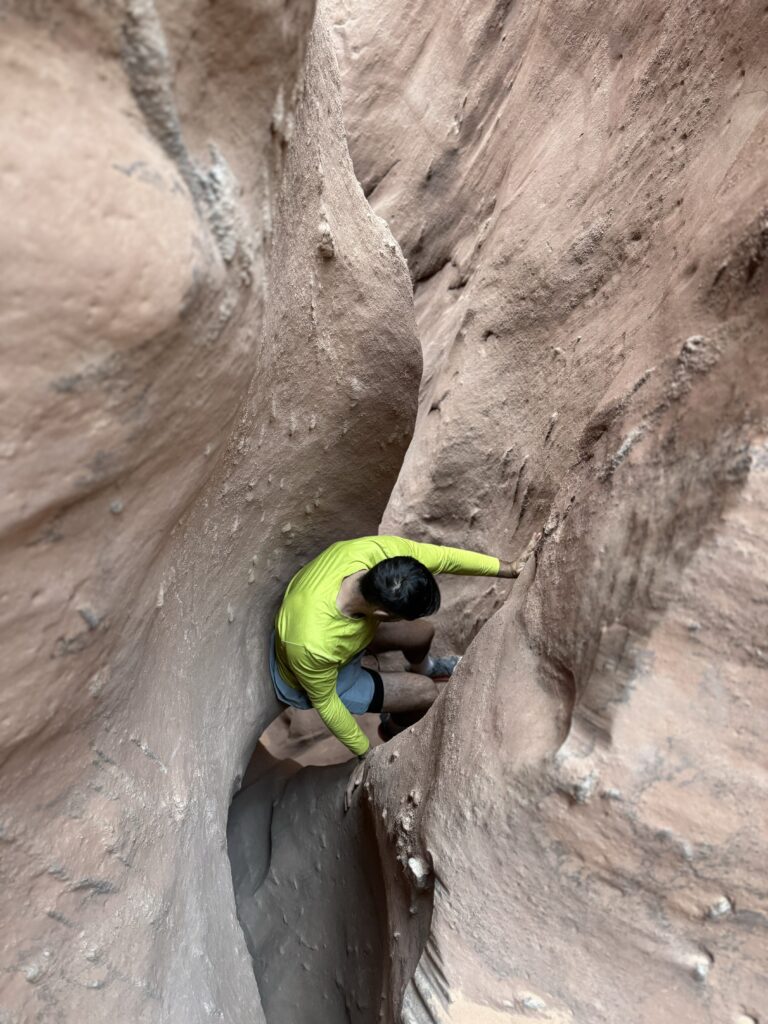
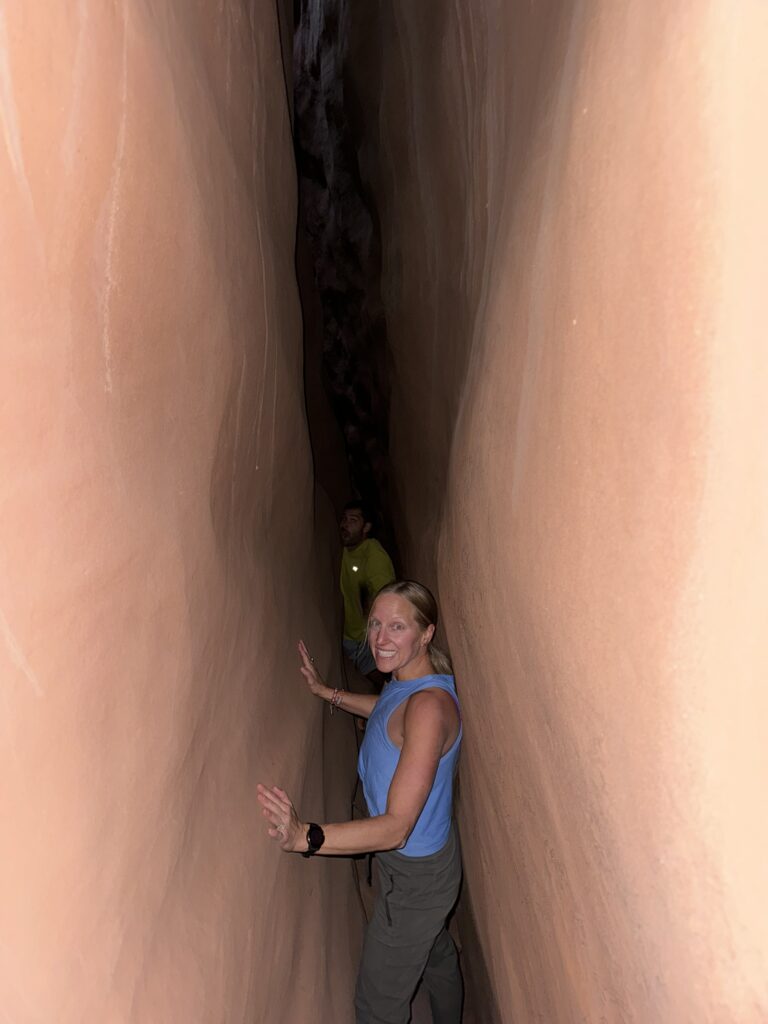
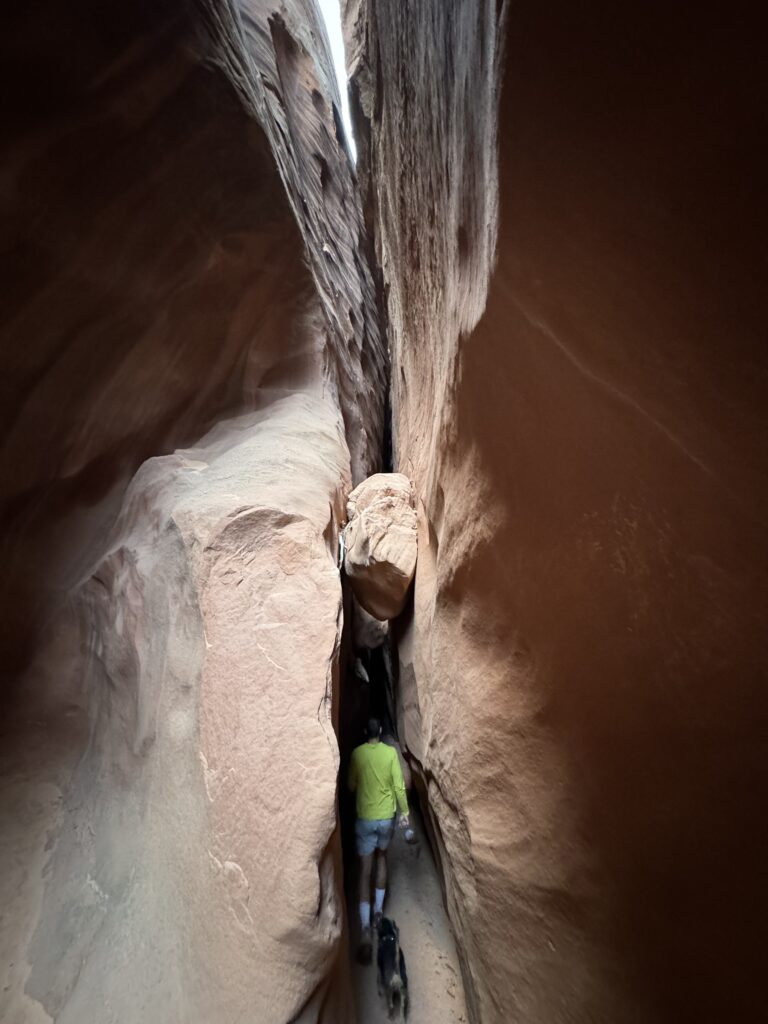
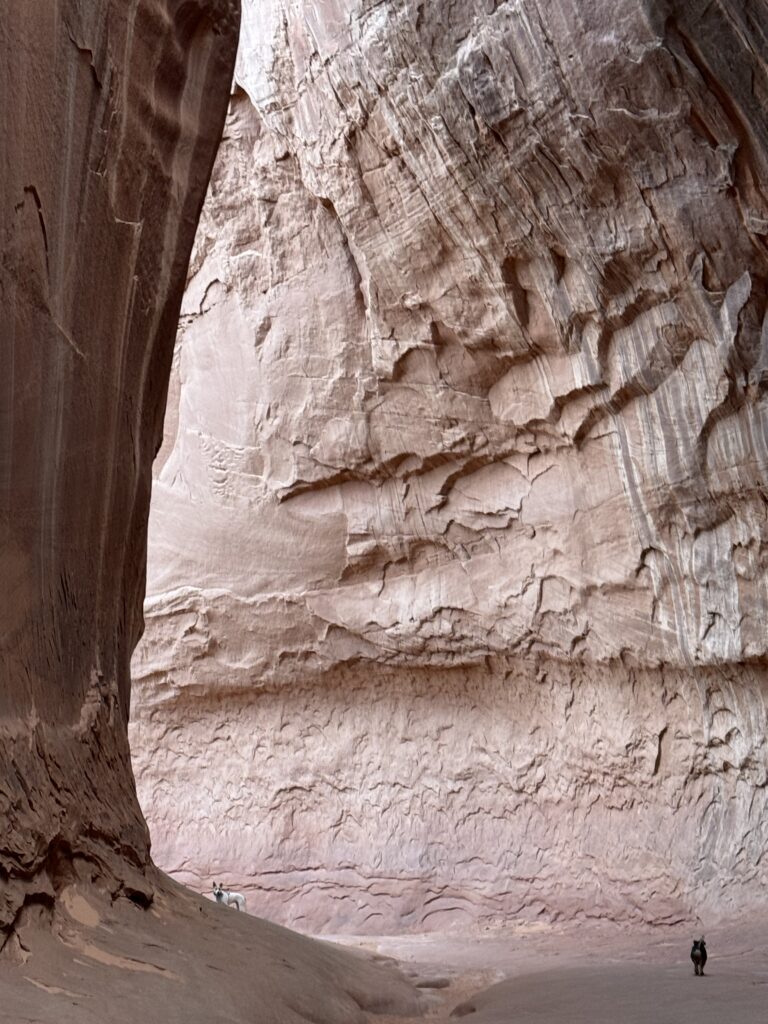
Morning Hike in Blarney Canyon
On day 2, we tackled Blarney Canyon, our favorite of the Irish Canyons. We hiked the entire East Fork from bottom to top, navigating small obstacles that required basic skills like chimneying, stemming, and slickrock scrambling. Despite the challenges, these were manageable for us without technical equipment. Each obstacle offered a chance to decide if it was worth the effort, reminding us to always consider our abilities and safety.
We would often get to a technical spot and consider the capabilities and desires of the group along with the risk and decide to take on the obstacle or make smart choices and turn around. There were definitely sections that we didn’t feel comfortable without rope and canyoneering gear!
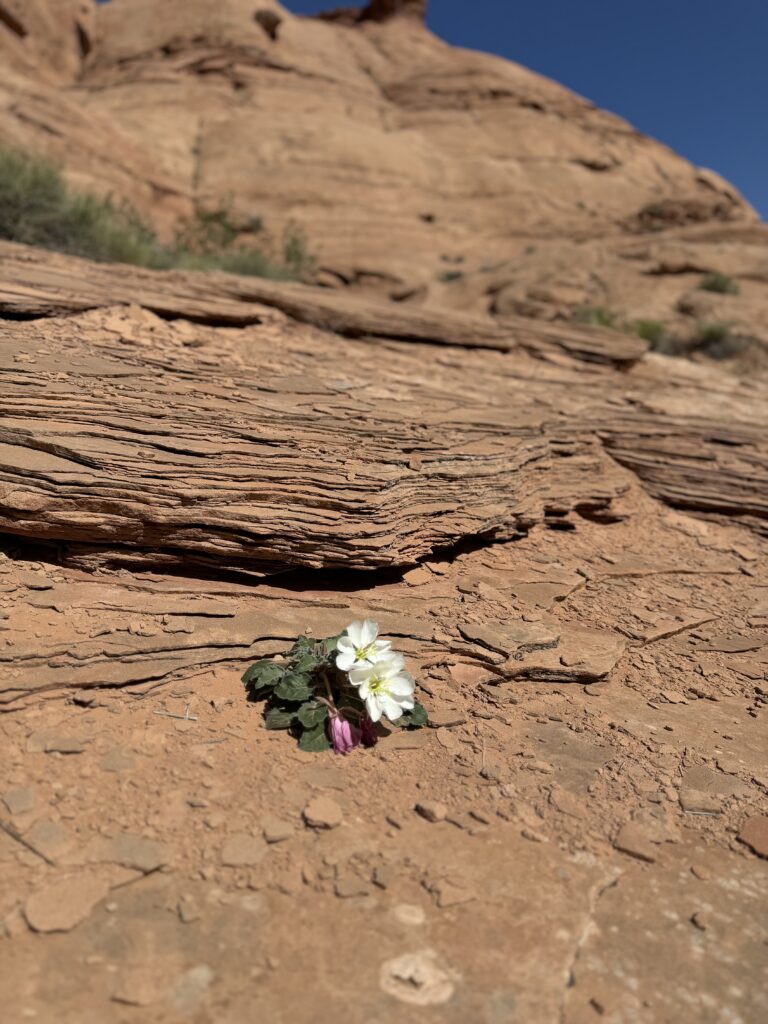
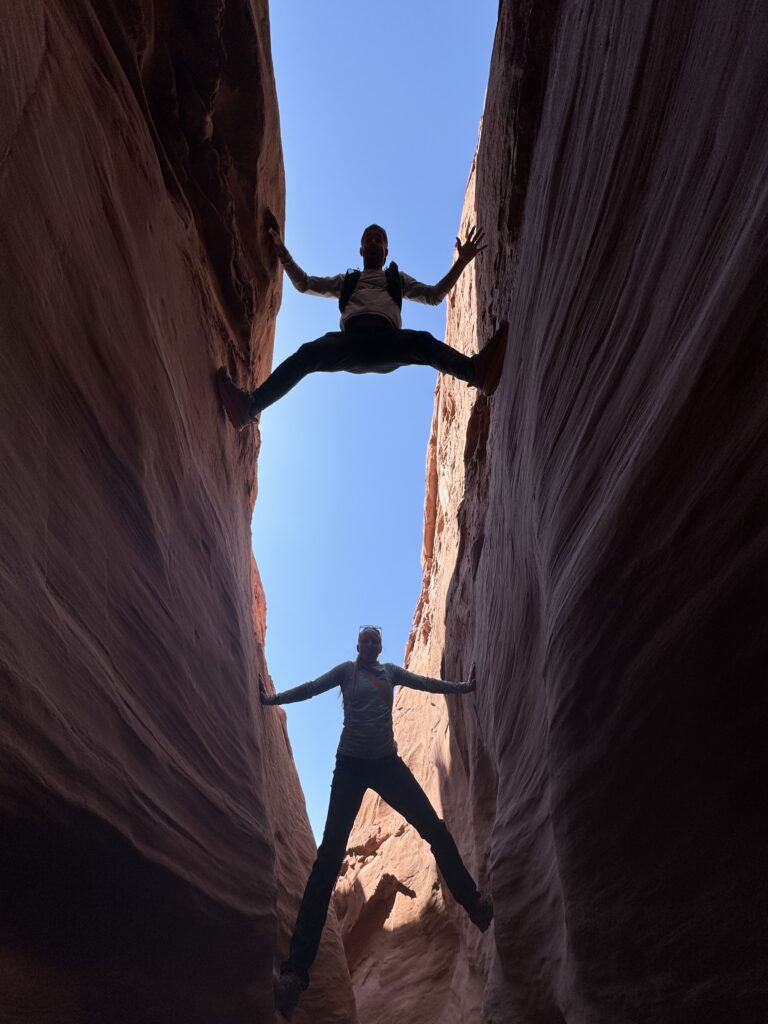
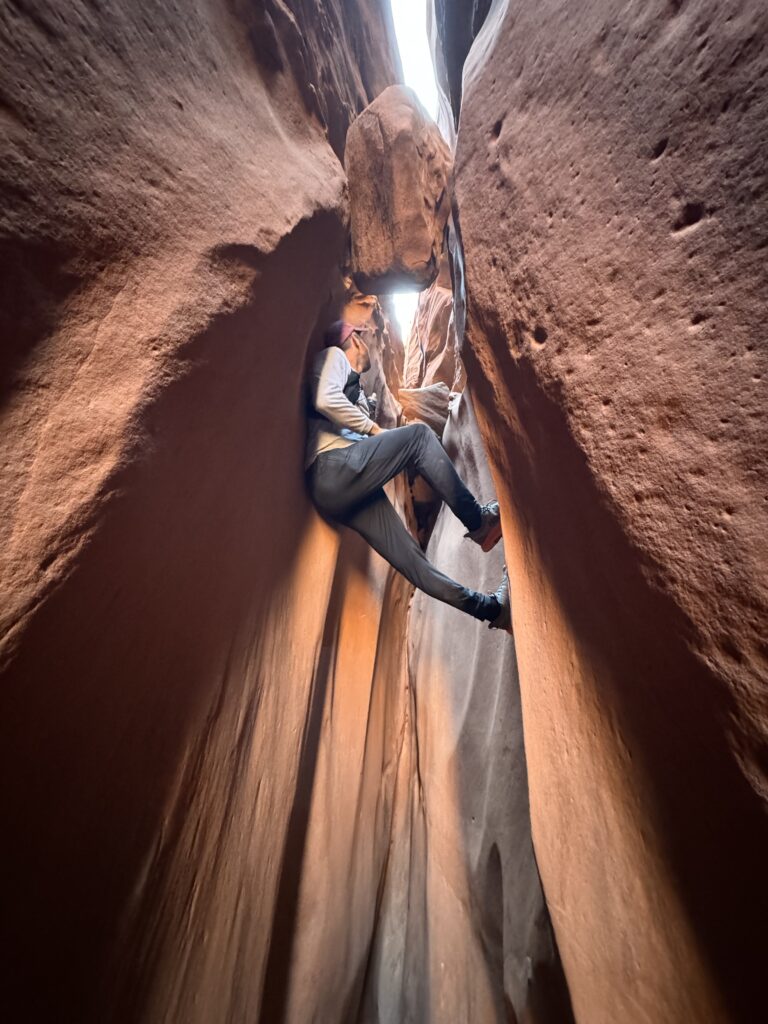
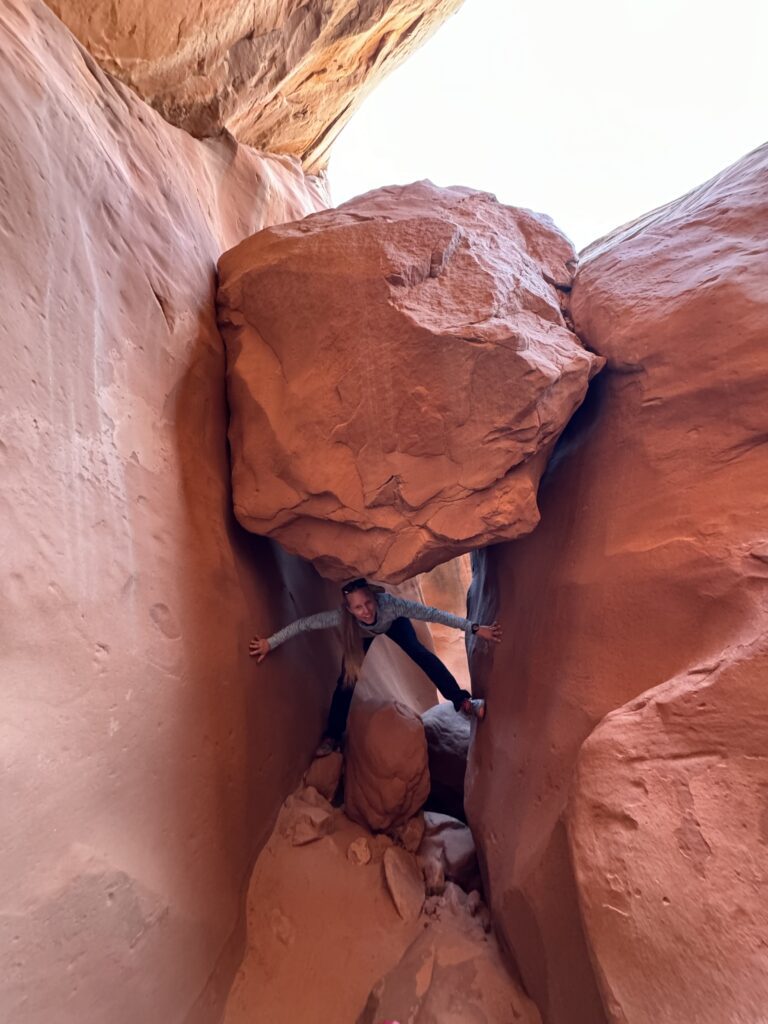
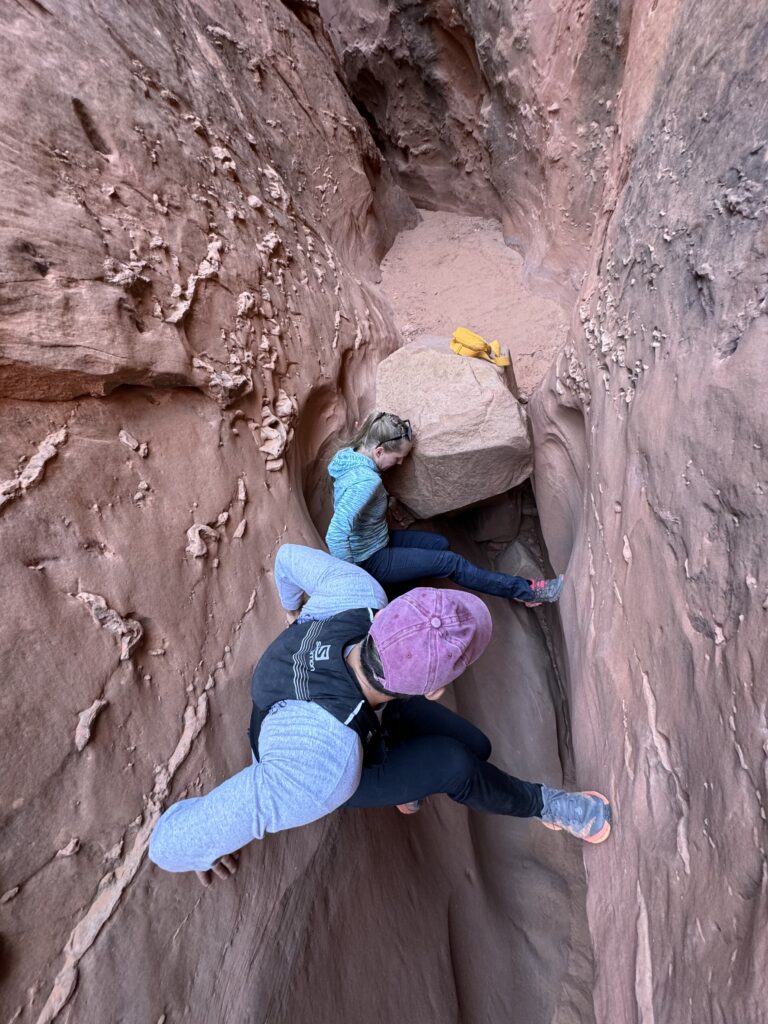
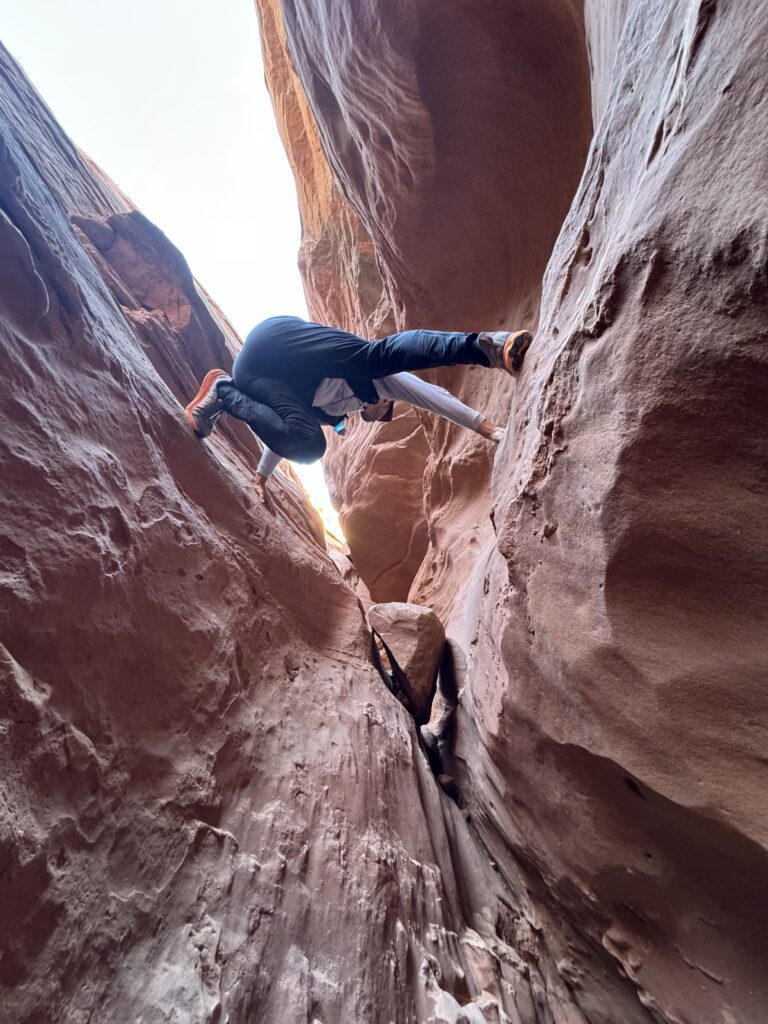
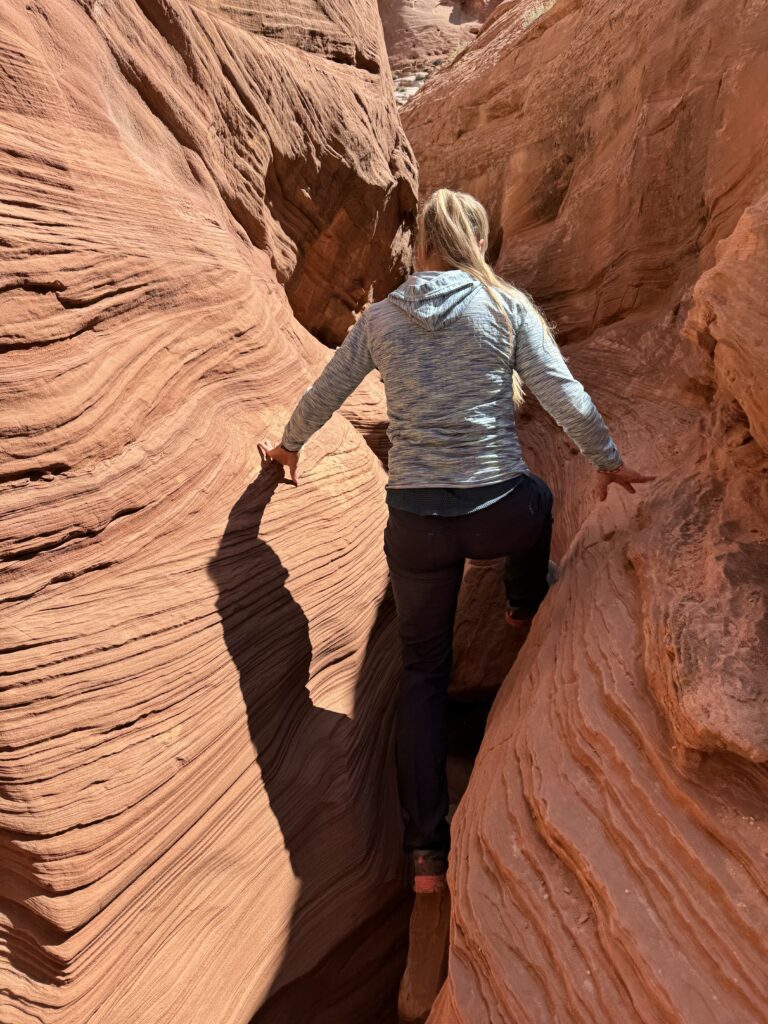
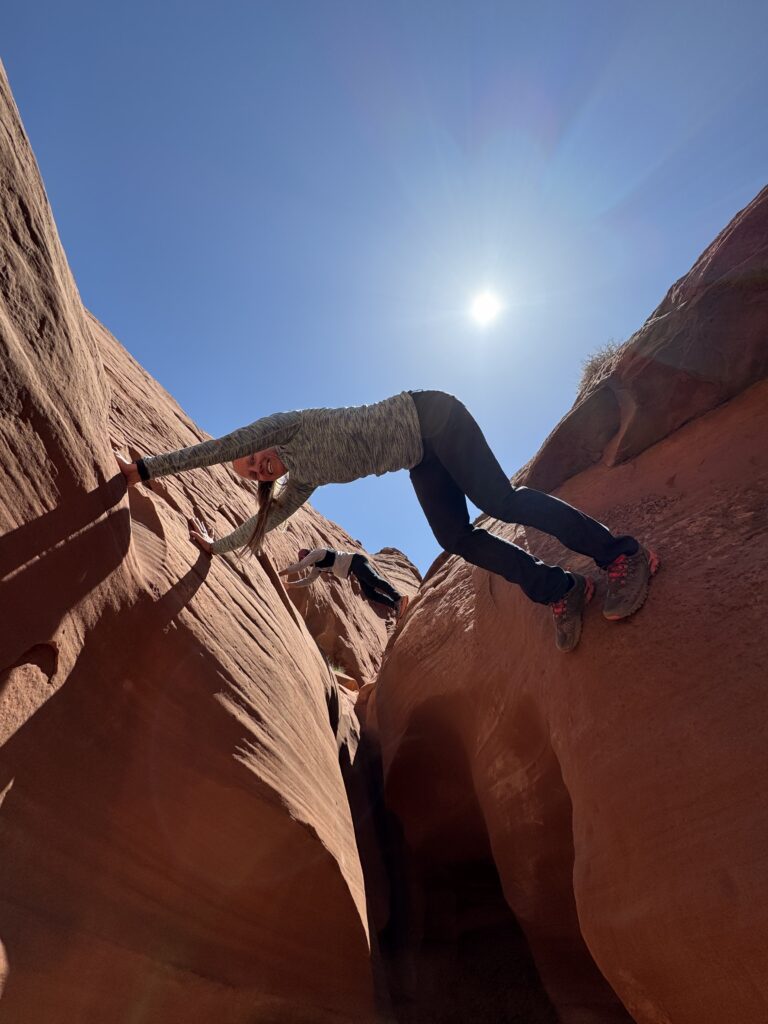
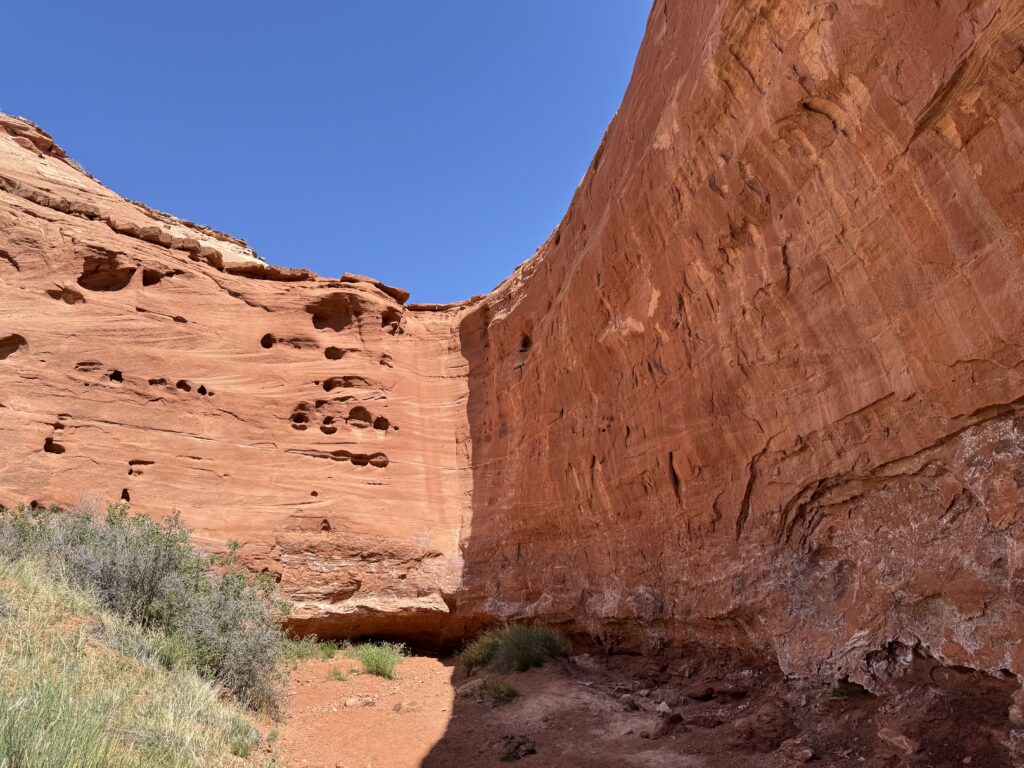
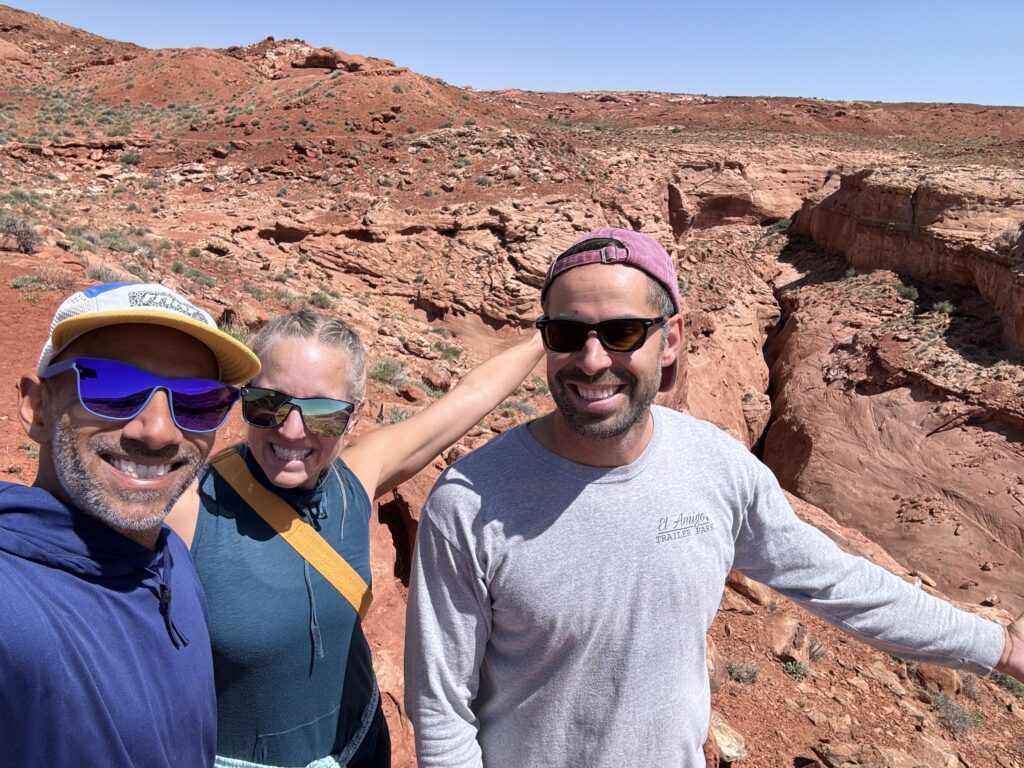
Afternoon Adventure: Shillelagh Canyon
After a refreshing PB&J lunch, water fills, and bandages on bleeding fingers, we headed to Shillelagh Canyon. We explored the right fork, which ends in a stunning amphitheater with towering walls over 80 feet high. The 0.6-mile hike (plus an additional 0.5 miles to reach the fork) was a fantastic experience, showcasing the canyon’s unique beauty and rugged terrain.
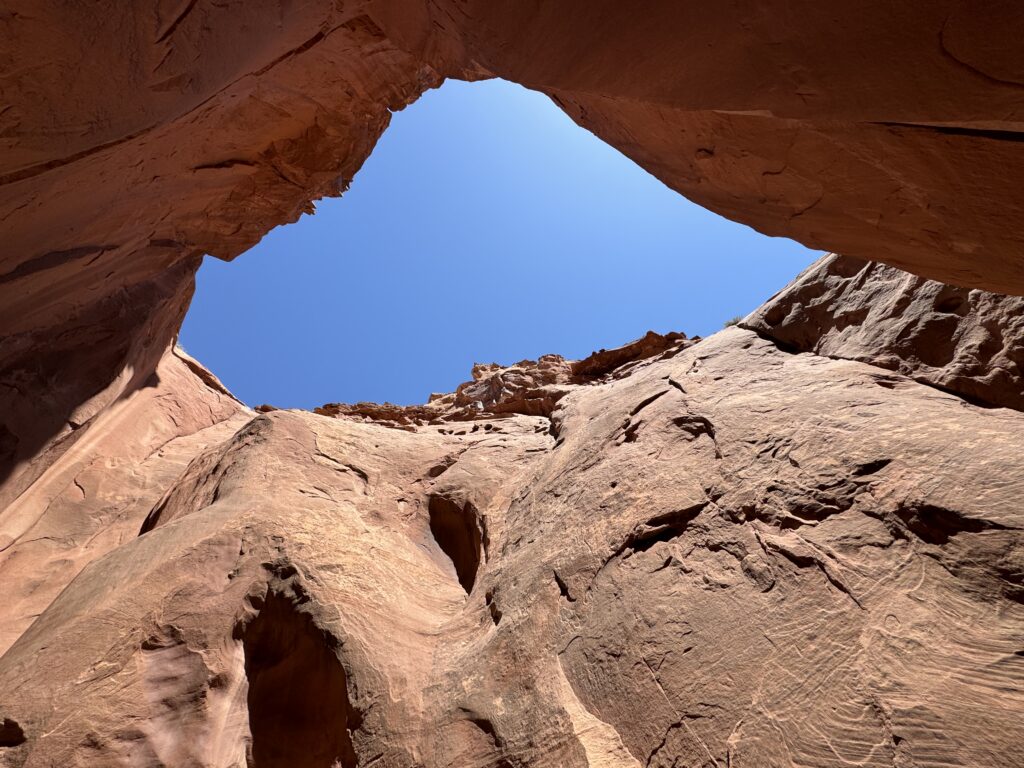
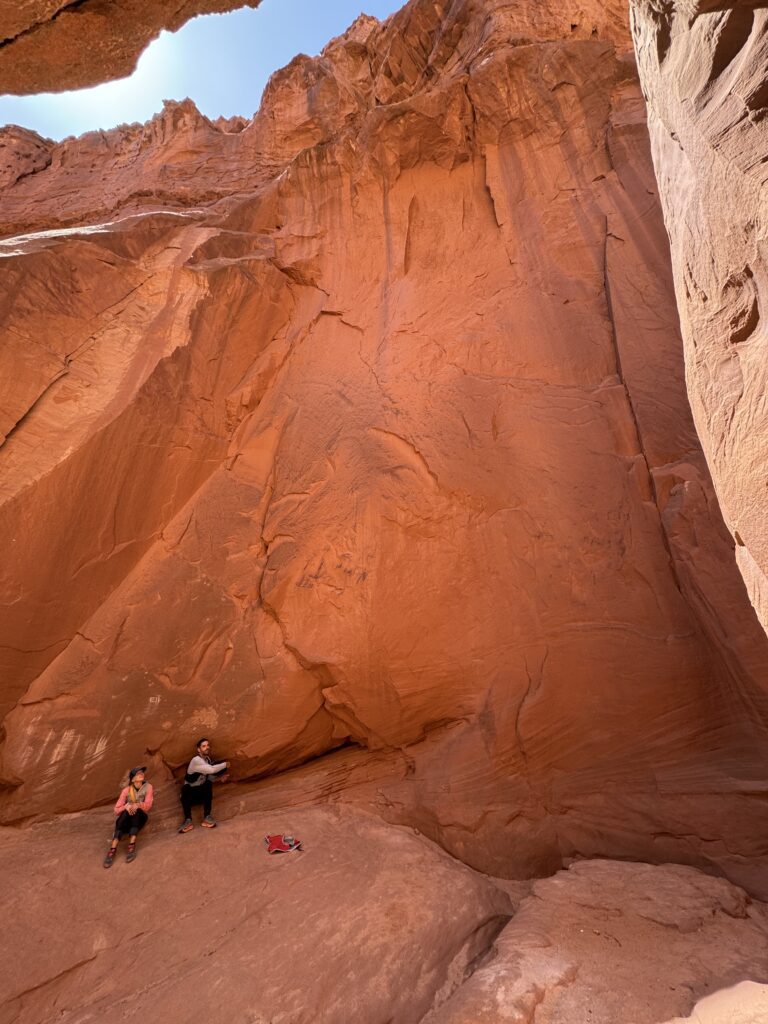
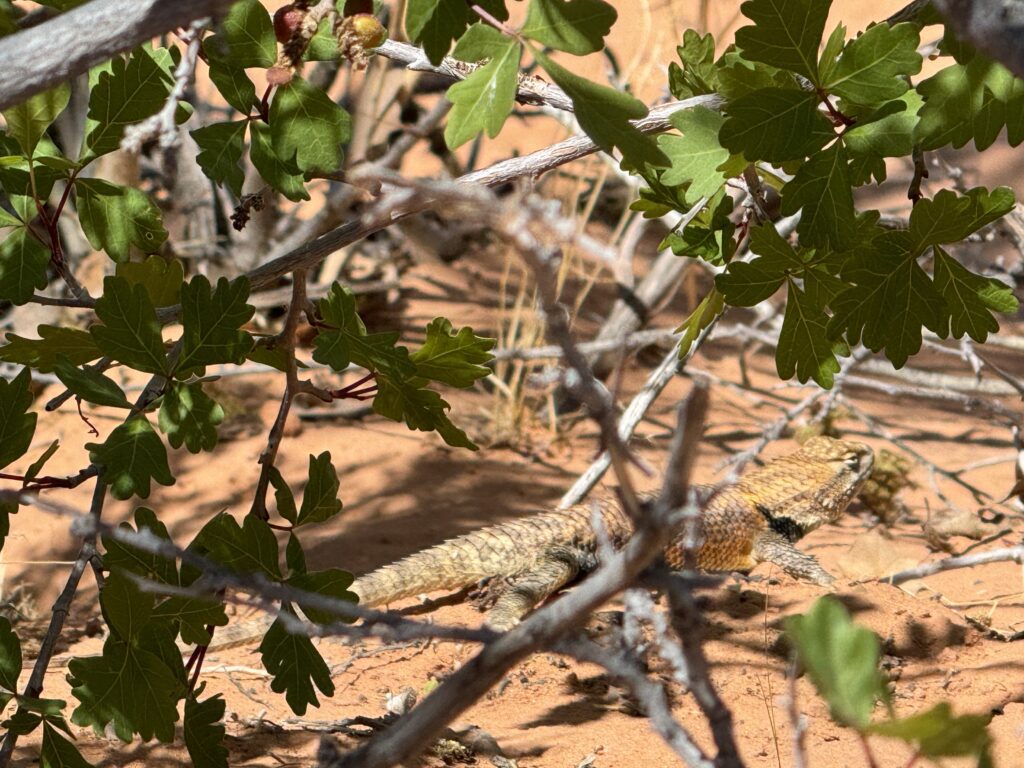
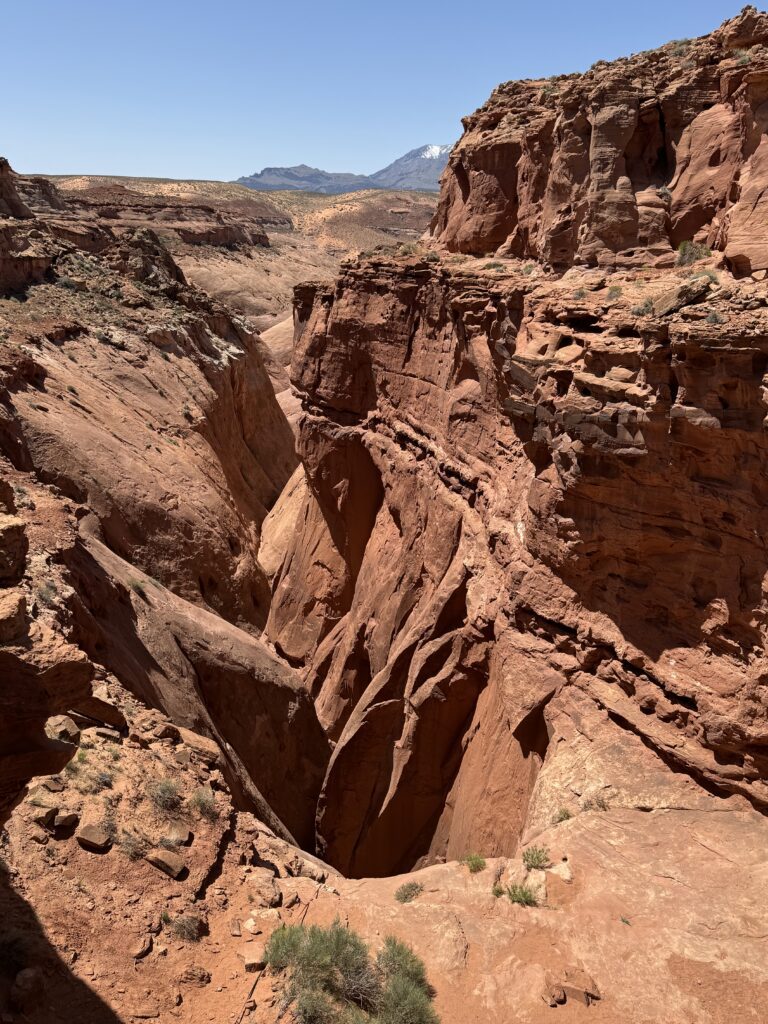
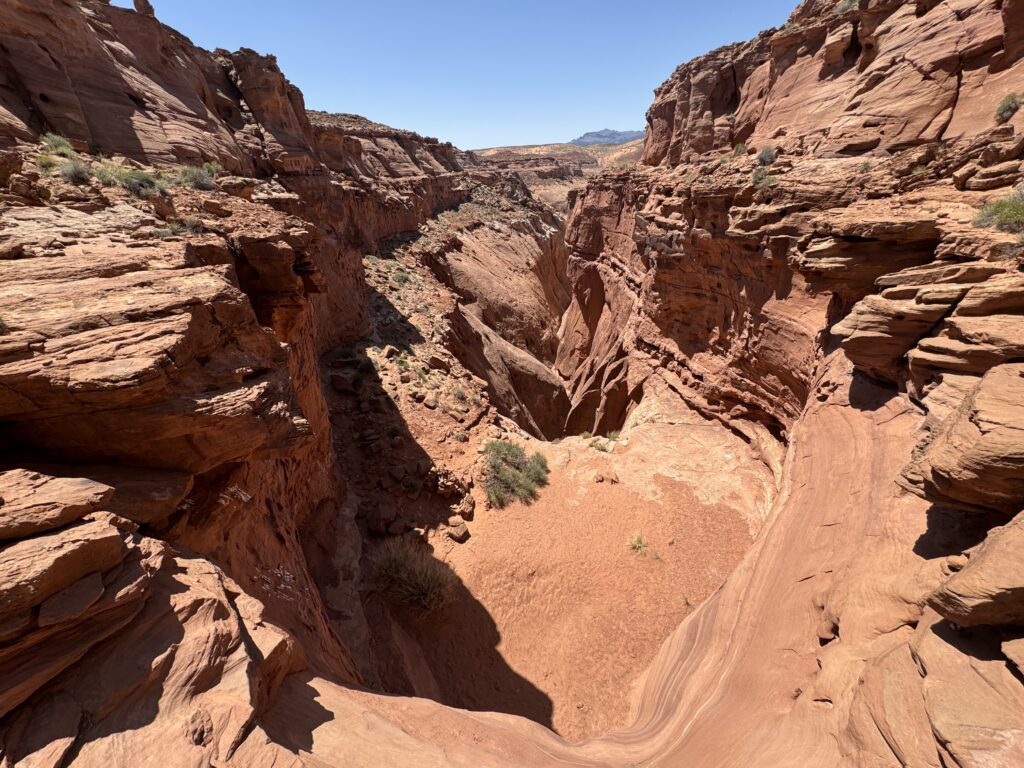
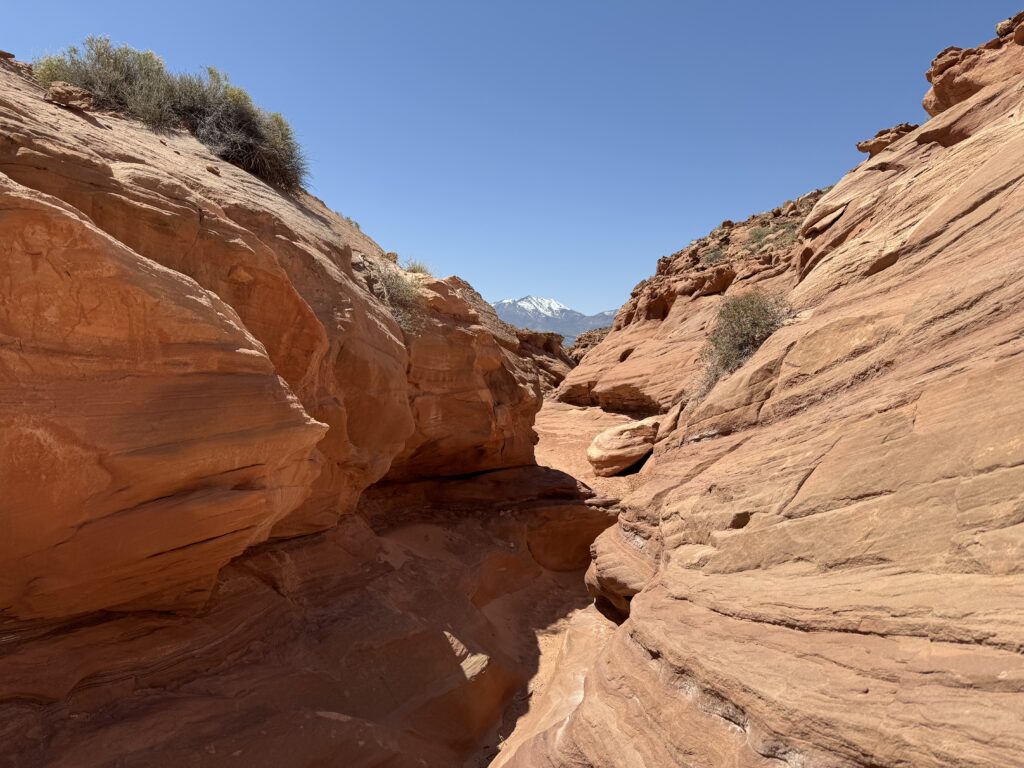
Late afternoon finish in the Lucky Charms Canyon
Our last adventure took us to Lucky Charms Canyon. Although one of the shorter canyons, it presented a 25-foot climb that we chose to bypass. We covered about half a mile of the 1.2-mile trail, appreciating the accessible and fun nature of this canyon.
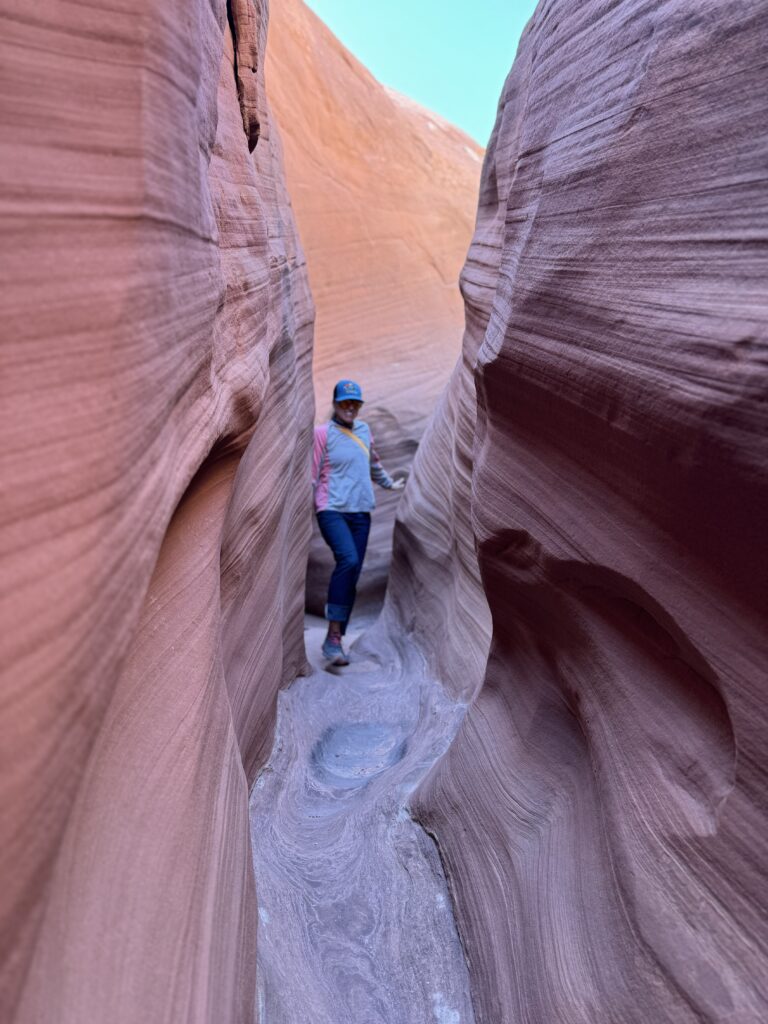
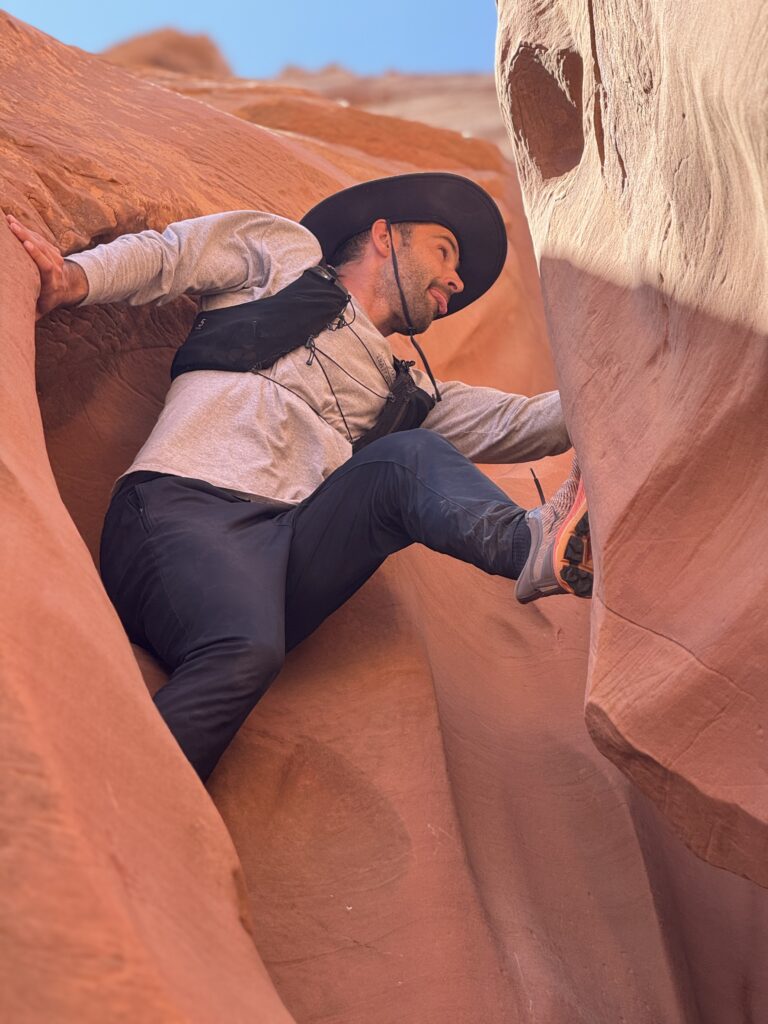
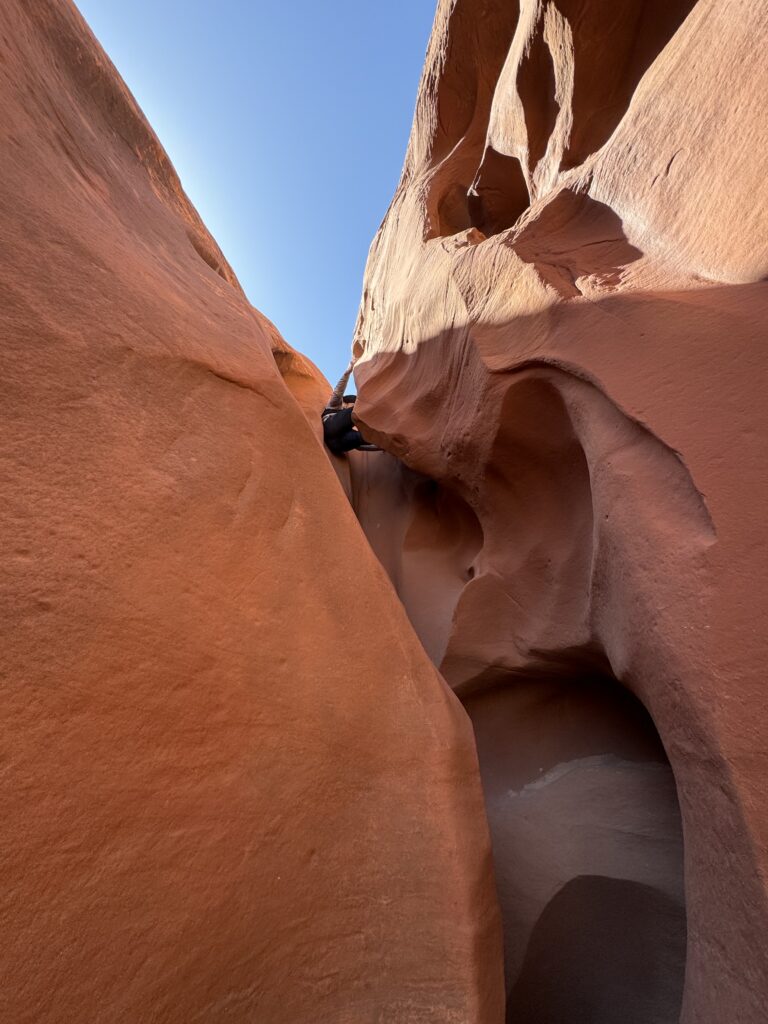
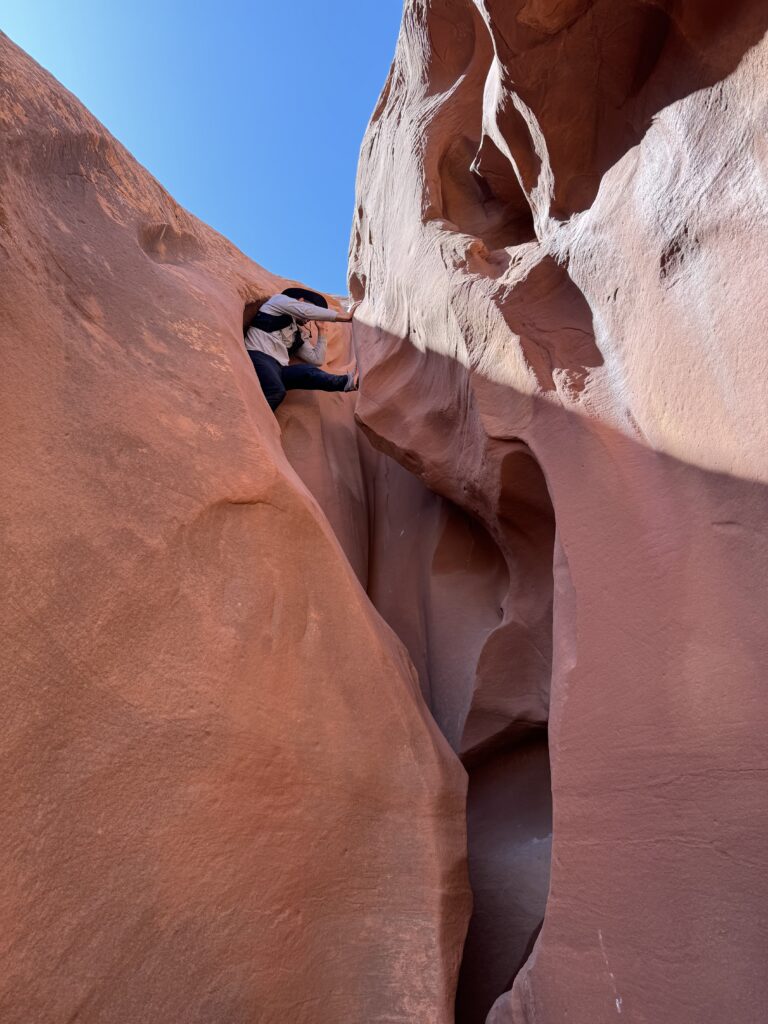
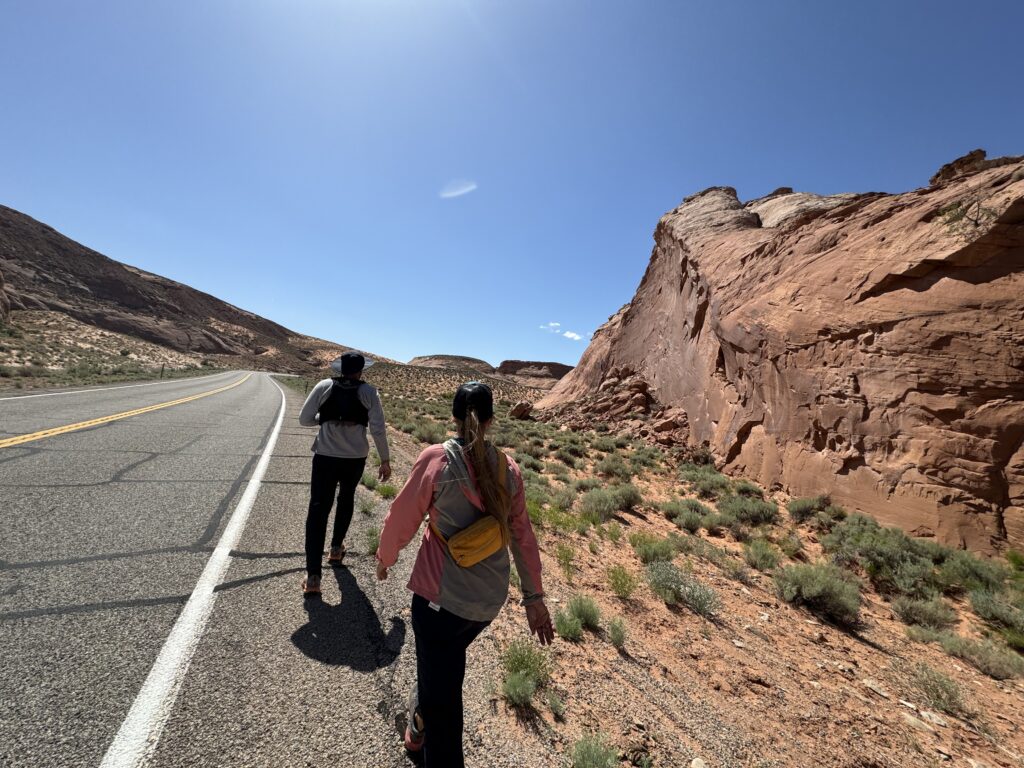
Why We Loved the Irish Canyons
The Irish Canyons are accessible by hiking in (at least portions of them) and you can experience them all within a couple of days. They had easy road access and minimal need for technical skills. These canyons are perfect for those canyoneering-curious adventurers without the complexities of rappelling or rope climbs. The varied routes and options provide a playground-like experience, where you can choose your adventure, whether it involves stemming, Spider Manning, or simple scrambling. Drew will demonstrate them all for you.
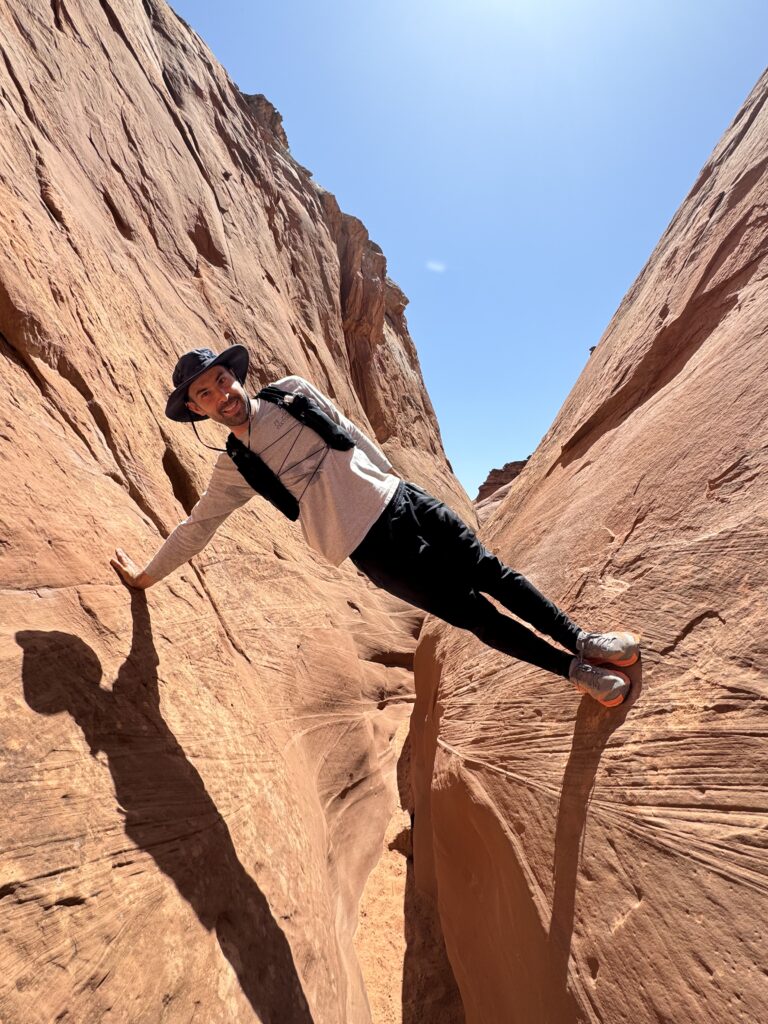
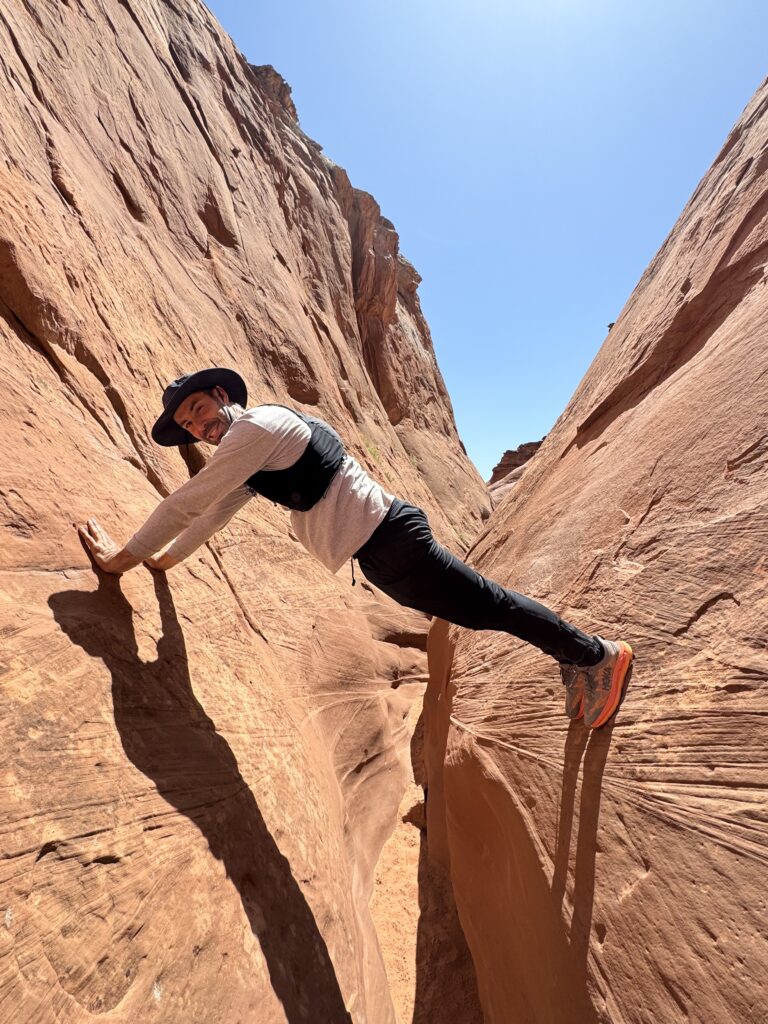
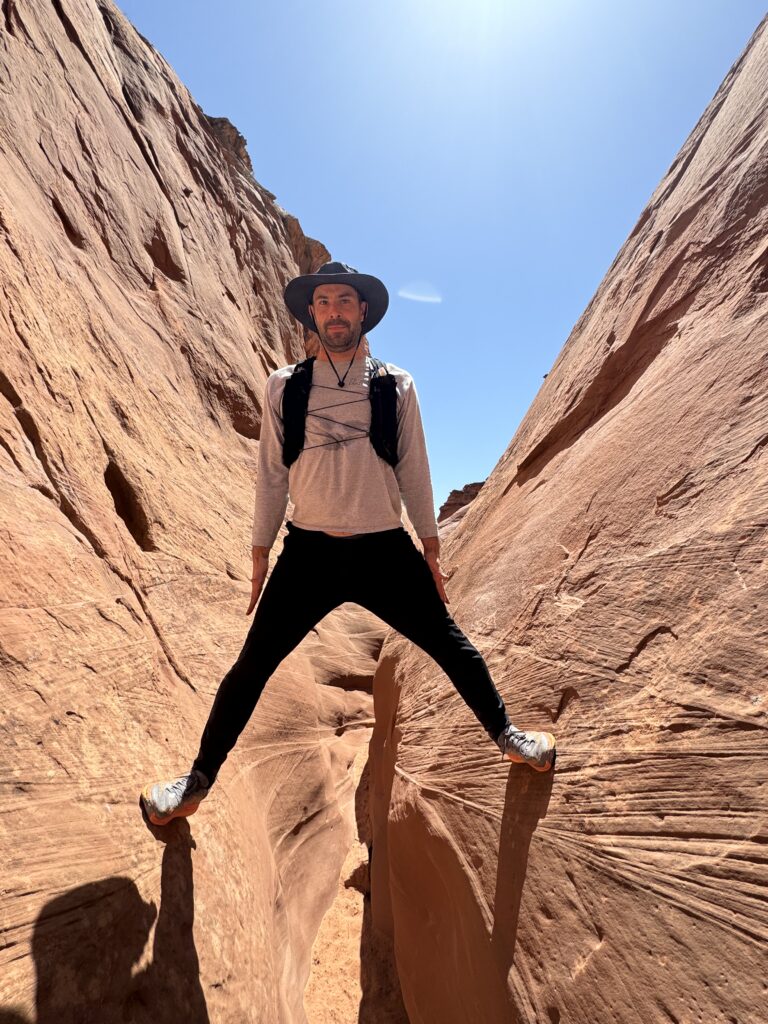
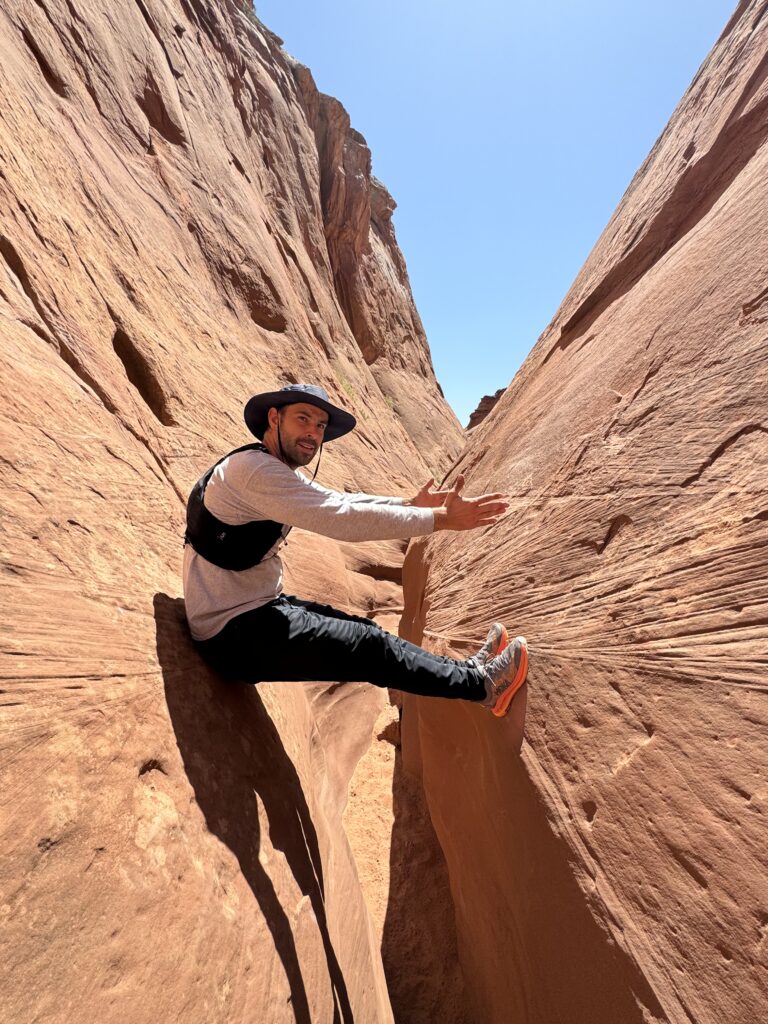
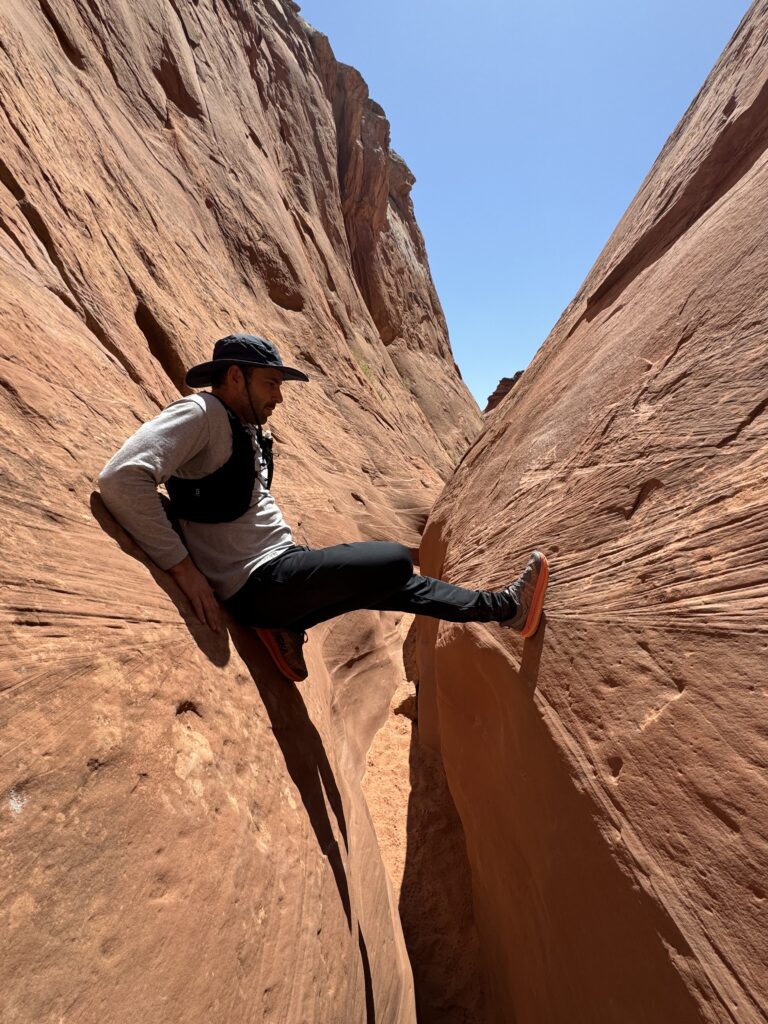
Tips for a Safe and Enjoyable Hike
Canyoneering is not without its risks. Be mindful of flash floods and prepare adequately. Even on cooler days, temperatures can vary dramatically between the canyon tops and depths. Research thoroughly, follow Leave No Trace principles, and consider a guided trip if you’re unsure about your abilities.
Goblin Valley State Park & Horseshoe Canyon
After the Irish Canyons, we headed north and set up basecamp at Goblin Valley State Park, just north of Hanksville, which is a rad spot in itself. The State Park and surrounding areas are dominated by funky hoodoo formations that look straight out of a sci-fi set. We opted for dispersed camping just outside the park, where you’ll find wide-open desert views, dark skies for stargazing, and plenty of quiet. Sites are primitive, so bring everything you need and follow Leave No Trace—pack out all trash and waste. If you need amenities (bathrooms, water, etc.) definitely choose the Goblin Valley State Park campground. Goblin Valley is also a great launchpad for day trips into the surrounding canyons.
Evening Hike: Farnsworth Canyon
One evening we headed out to explore Farnsworth Canyon, just a short drive from Goblin Valley. The road in was mostly manageable in our Chevy Colorado, though one rocky section gave us a good undercarriage scrape—lower-clearance vehicles may want to park before that and walk the extra bit. The canyon itself was incredible: tall Navajo sandstone walls, winding passages, and total solitude. There are even a few informal camping spots near the trailhead. We found this gem on Trailforks, and it turned out to be one of our favorite “off the radar” hikes of the trip. Definitely check it out if you are in the area!
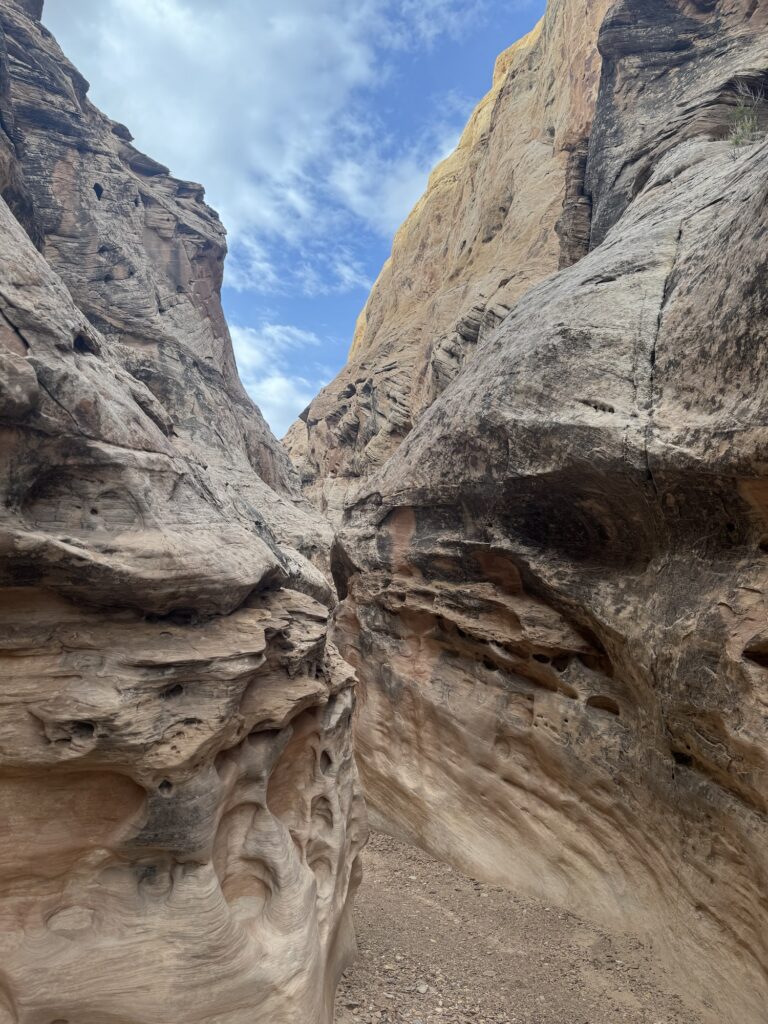
Hiking Horseshoe Canyon to the Great Gallery
When you’re in the Hanksville area, visiting Horseshoe Canyon is a must! It’s one of the more remote sections of Canyonlands National Park and easiest to access from the Hansville area. We made the 1-hour drive to this section of the park, famous for the Great Gallery—one of the most impressive collections of ancient Barrier Canyon-style rock art in North America. The drive was dirt, but the road was good – just a bit of washboard in places. The hike to the petroglyphs is about 7 miles round trip and is rated as strenuous because of the elevation (~800 feet) and the remote nature of the hike. We didn’t find it too technical, but it was long and best done in the spring or fall when the weather is cooler. The hike drops you into a wide canyon with massive cottonwoods, sandy washes, and towering walls. The highlight is the panel itself, with life-sized pictographs that are over 2,000 years old. Standing in front of the Great Gallery is a humbling experience and a reminder of how deep the human history runs in this region. It’s a longer day hike, so start early, bring plenty of water, and be prepared for a climb on the way out.
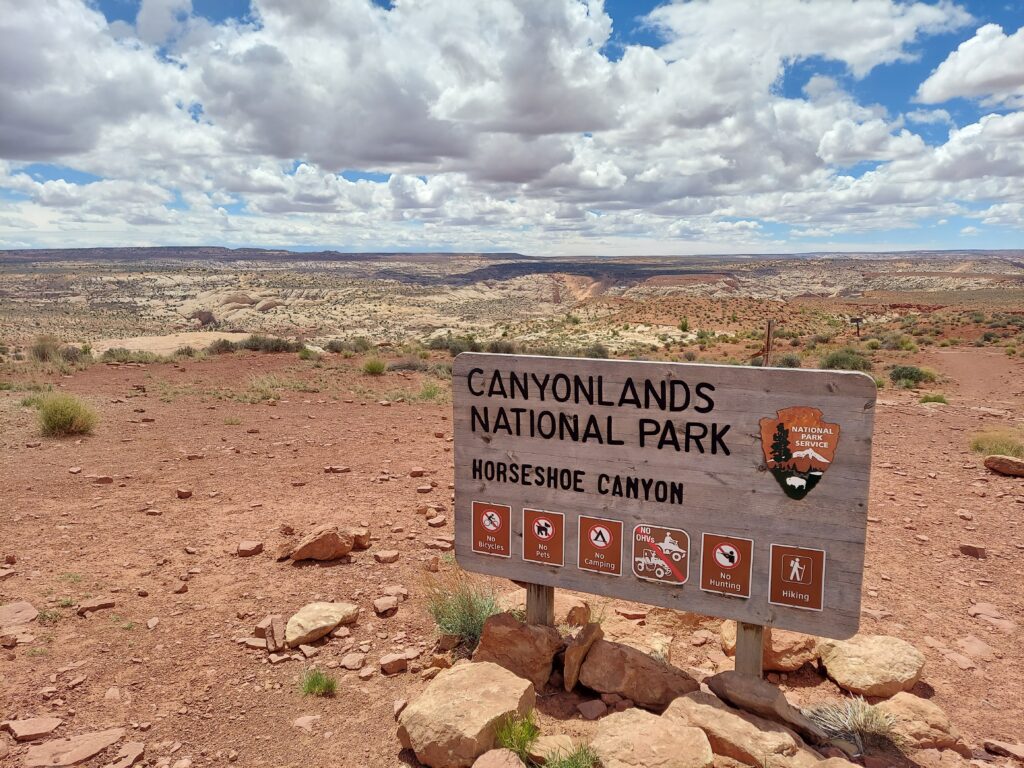
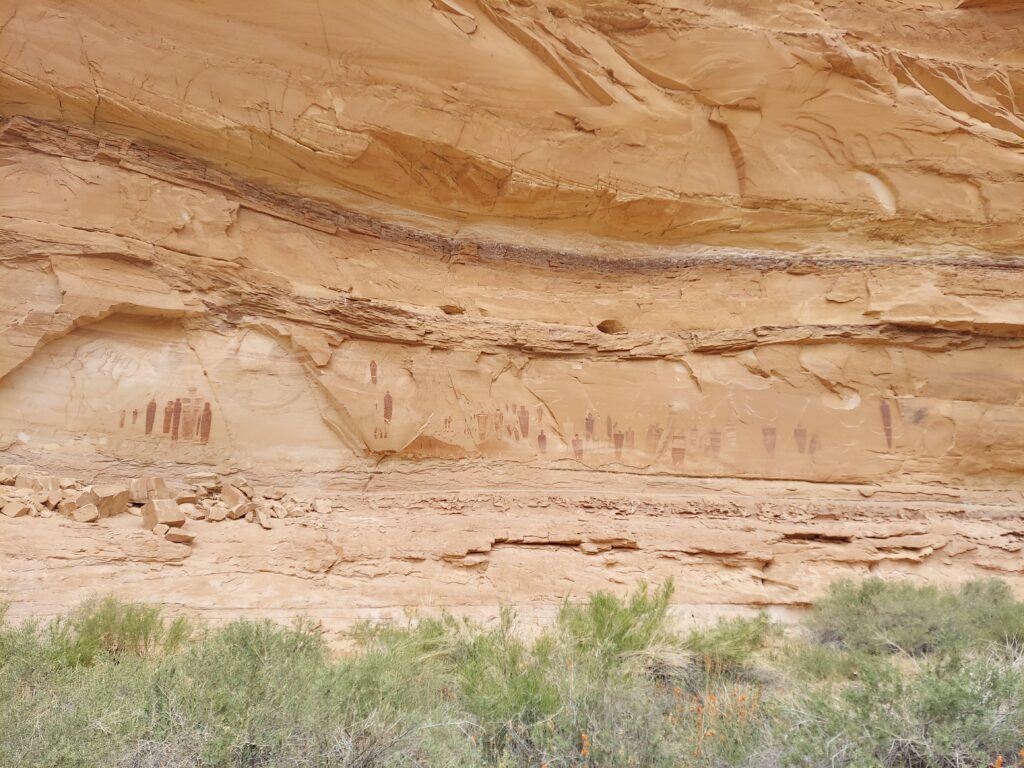
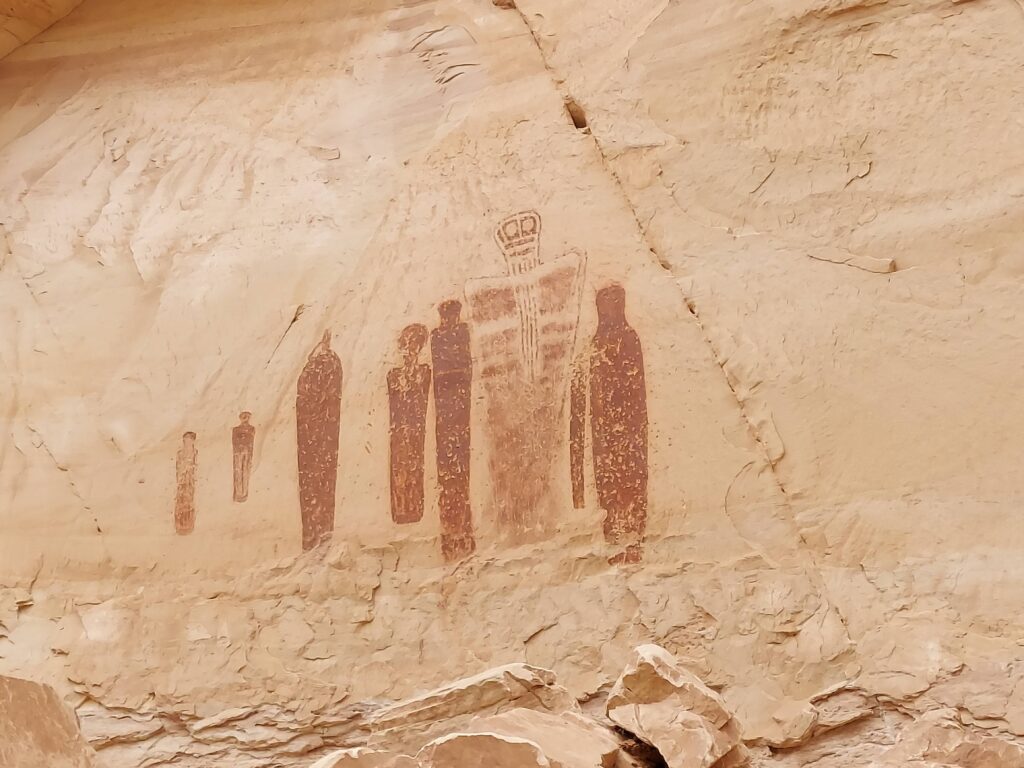
Why We Loved the Hanksville & the Goblin Valley Area
Between the playful slot canyons of the Irish Canyons, the eerie landscapes of Goblin Valley, the solitude of Farnsworth Canyon, and the ancient rock art of Horseshoe Canyon, this corner of Utah packs in so much adventure. It’s less crowded than Moab or Zion, but just as spectacular. Whether you’re canyoneering, hiking, or camping under the stars, Hanksville is an incredible basecamp for exploring some of Utah’s wildest landscapes.
Protecting Utah’s Wild Areas with SUWA
Exploring in Utah’s wild landscapes is unforgettable – the sculpted sandstone slots, the quiet desert solitude, the feeling of discovery around every bend. But these places don’t stay wild on their own. Groups like the Southern Utah Wilderness Alliance (SUWA) are on the front lines, working to keep Utah’s red rock country protected from threats like unchecked development, off-road vehicle damage, and energy extraction.
At TripOutside, we believe that adventuring responsibly also means giving back to the places we love. SUWA’s mission aligns perfectly with our conservation goals: safeguarding the canyons and wildlands so future generations can experience the same magic you do when rappelling into a narrow slot or hiking beneath towering sandstone walls.
If exploring Utah’s canyons leaves you stoked to protect while you play, check out SUWA’s work. Whether it’s signing a petition, supporting campaigns for wilderness designation, or even volunteering to join a stewardship project, your voice makes a difference.

